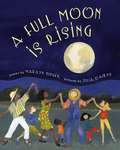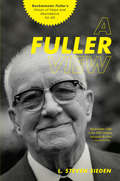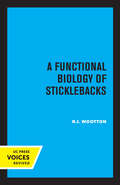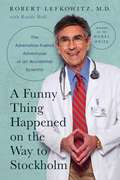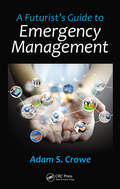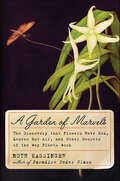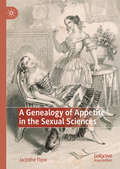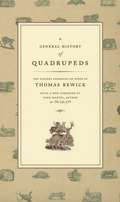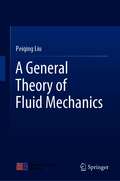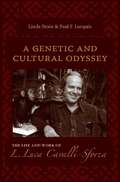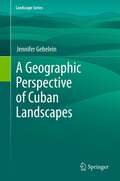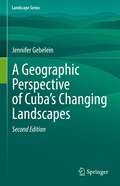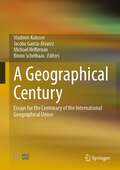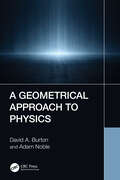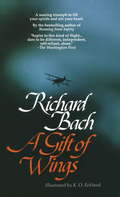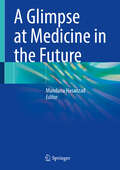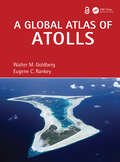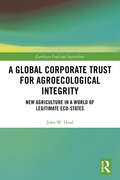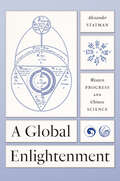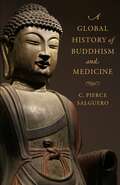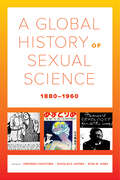- Table View
- List View
A Fruit Is a Suitcase for Seeds
by Jean RichardsA description of seed dispersal by which plants, most specifically fruits, travel from one place to another.
A Full Moon is Rising
by Marilyn Singer Julia CairnsMysterious and evocative, the full moon is the most celebrated phase of the earth s only natural satellite. Around the world, people and other living things interact with and are affected by the full moon in fascinating ways. Sailors set out to sea on the high tides the full moon causes. Insects and migrating birds are guided by its brilliant light. Families dance, sing, and feast at full moon festivals, while traders buy and sell camels. Corals reproduce, wolves howl, and children dream of being astronauts. In this poetic exploration of full moon science, celebrations, beliefs, and illusions, Marilyn Singer and Julia Cairns take us on a whirlwind international tour. Along the way we visit Canada, Israel, Morocco, India, China, Australia, and more as we learn about the many ways people welcome and honor Earth s wondrous full moon.
A Fuller View
by L. Steven SiedenKnown as a "Leonardo da Vinci of the twentieth century," engineer, designer, inventor, and futurist Dr. R. Buckminster "Bucky" Fuller had a keen awareness that we're all in this together. Understanding that humans don't have aclue about how to operate our fragile Spaceship Earth, Buckminster provided insightful design science solutions to our most challenging issues, including war, overpopulation, housing, increasing inflation, health care, the energy crisis, and much more. For all its genius, Fuller's legacy has yet to be fully discovered. Noted Fuller expert L. Steven Sieden together with Gary Zukav, John Robbins, Lynne Twist, Jean Houston, and many other notable individuals offer inspiring quotations and explanations that make Fuller's life more understandable and accessible. They preserve a voice that calls upon each of us to shift our intellectual and technological resources from creating weaponry to creating sustainability.Winner 2013 COVR award - Gold
A Functional Biology of Sticklebacks
by R. J. WooltonThis title is part of UC Press's Voices Revived program, which commemorates University of California Press’s mission to seek out and cultivate the brightest minds and give them voice, reach, and impact. Drawing on a backlist dating to 1893, Voices Revived makes high-quality, peer-reviewed scholarship accessible once again using print-on-demand technology. This title was originally published in 1984.
A Funny Thing Happened on the Way to Stockholm: The Adrenaline Fueled Adventures of an Accidental Scientist
by Robert Lefkowitz Randy HallThe rollicking memoir from the cardiologist turned legendary scientist and winner of the Nobel Prize that revels in the joy of science and discovery.Like Richard Feynman in the field of physics, Dr. Robert Lefkowitz is also known for being a larger-than-life character: a not-immodest, often self-deprecating, always entertaining raconteur. Indeed, when he received the Nobel Prize, the press corps in Sweden covered him intensively, describing him as &“the happiest Laureate.&” In addition to his time as a physician, from being a "yellow beret" in the public health corps with Dr. Anthony Fauci to his time as a cardiologist, and his extraordinary transition to biochemistry, which would lead to his Nobel Prize win, Dr. Lefkowitz has ignited passion and curiosity as a fabled mentor and teacher. But it's all in a days work, as Lefkowitz reveals in A Funny Thing Happened on the Way to Stockholm, which is filled to the brim with anecdotes and energy, and gives us a glimpse into the life of one of today's leading scientists.
A Future History of Water
by Andrea BallesteroBased on fieldwork among state officials, NGOs, politicians, and activists in Costa Rica and Brazil, A Future History of Water traces the unspectacular work necessary to make water access a human right and a human right something different from a commodity. Andrea Ballestero shows how these ephemeral distinctions are made through four technolegal devices—formula, index, list and pact. She argues that what is at stake in these devices is not the making of a distinct future but what counts as the future in the first place. A Future History of Water is an ethnographically rich and conceptually charged journey into ant-filled water meters, fantastical water taxonomies, promises captured on slips of paper, and statistical maneuvers that dissolve the human of human rights. Ultimately, Ballestero demonstrates what happens when instead of trying to fix its meaning, we make water’s changing form the precondition of our analyses.
A Futurist's Guide to Emergency Management
by Adam S. CroweA Futurist's Guide to Emergency Management provides interdisciplinary analysis on how particular sets of conditions may occur in the future by evaluating global trends, possible scenarios, emerging conditions, and various other elements of risk management. Firmly based in science, the book leverages historical data, current best practices, and scie
A Garden of Marvels: How We Discovered that Flowers Have Sex, Leaves Eat Air, and Other Secrets of Plants
by Ruth KassingerIn the tradition of The Botany of Desire and Wicked Plants, a witty and engaging history of the first botanists interwoven with stories of today’s extraordinary plants found in the garden and the lab.In Paradise Under Glass, Ruth Kassinger recounted with grace and humor her journey from brown thumb to green, sharing lessons she learned from building a home conservatory in the wake of a devastating personal crisis.In A Garden of Marvels, she extends the story. Frustrated by plants that fail to thrive, she sets out to understand the basics of botany in order to become a better gardener. She retraces the progress of the first botanists who banished myths and misunderstandings and discovered that flowers have sex, leaves eat air, roots choose their food, and hormones make morning glories climb fence posts. She also visits modern gardens, farms, and labs to discover the science behind extraordinary plants like one-ton pumpkins, a truly black petunia, a biofuel grass that grows twelve feet tall, and the world's only photosynthesizing animal. Transferring her insights to her own garden, she nurtures a "cocktail" tree that bears five kinds of fruit, cures a Buddha's Hand plant with beneficial fungi, and gets a tree to text her when it's thirsty.Intertwining personal anecdote, accessible science, and untold history, the ever-engaging author takes us on an eye-opening journey into her garden—and yours.
A Genealogy of Appetite in the Sexual Sciences
by Jacinthe FloreThis book offers a genealogy of the medicalisation of sexual appetite in Europe and the United States from the nineteenth to twenty-first century. Histories of sexuality have predominantly focused on the emergence of sexual identities and categories of desire. They have marginalised questions of excess and lack, the appearance of a libido that dwindles or intensifies, which became a pathological object in Europe by the nineteenth century. Through a genealogical approach that draws on the writings of Michel Foucault, A Genealogy of Appetite in the Sexual Sciences examines key ‘moments’ in the pathologisation of sexuality and demonstrates how medical techniques assumed critical roles in shaping modern understandings of the problem of appetite. It examines how techniques of the patient case history, elixirs and devices, measurement, diagnostic manuals and pharmaceuticals were central to the medicalisation of sexual appetite. Jacinthe Flore argues that these techniques are significant for understanding how a concern with ‘how much?’ has transformed medical knowledge of sexuality since the nineteenth century. The questions of ‘how much?’, ‘how often?’ and ‘how intense?’ thus require a genealogical investigation that pays attention to the emergence of medical techniques, the transformation of forms of knowledge and their effects on the problematisations of sexual appetite.
A General History of Quadrupeds: The Figures Engraved on Wood by Thomas Bewick
by Thomas BewickIn the late eighteenth century, the British took greater interest than ever before in observing and recording all aspects of the natural world. Travelers and colonists returning from far-flung lands provided dazzling accounts of such exotic creatures as elephants, baboons, and kangaroos. The engraver Thomas Bewick (1753–1828) harnessed this newfound interest by assembling the most comprehensive illustrated guide to nature of his day.A General History of Quadrupeds, first published in 1790, showcases Bewick’s groundbreaking engraving techniques that allowed text and images to be published on the same page. From anteaters to zebras, armadillos to wolverines, this delightful volume features engravings of over four hundred animals alongside descriptions of their characteristics as scientifically understood at the time. Quadrupeds reaffirms Bewick’s place in history as an incomparable illustrator, one whose influence on natural history and book printing still endures today.
A General Theory of Fluid Mechanics
by Peiqing LiuThis book provides a general introduction to fluid mechanics in the form of biographies and popular science. Based on the author’s extensive teaching experience, it combines natural science and human history, knowledge inheritance and cognition law to replace abstract concepts of fluid mechanics with intuitive and understandable physical concepts. In seven chapters, it describes the development of fluid mechanics, aerodynamics, hydrodynamics, computational fluid dynamics, experimental fluid dynamics, wind tunnel and water tunnel equipment, the mystery of flight and aerodynamic principles, and leading figures in fluid mechanics in order to spark beginners’ interest and allow them to gain a comprehensive understanding of the field’s development. It also provides a list of references for further study.
A Genetic and Cultural Odyssey: The Life and Work of L. Luca Cavalli-Sforza
by Linda StoneDrawing links between genetic and cultural development, Cavalli-Sforza developed groundbreaking techniques to trace the evolution of Homo sapiens and the origins of human differentiation, in addition to his earlier work in bacterial genetics. He is also the founder of the Human Genome Diversity Project and continues to work as the principal investigator at Stanford University's Human Population Genetics Laboratory. Based on extensive research and interviews with Cavalli-Sforza and his colleagues, this biography examines the scientist's life and his immense and occasionally controversial contributions to genetics, anthropology, and linguistics.
A Genetic and Cultural Odyssey: The Life and Work of L. Luca Cavalli-Sforza
by Paul F. Lurquin Stone LindaDrawing links between genetic and cultural development, Cavalli-Sforza developed groundbreaking techniques to trace the evolution of Homo sapiens and the origins of human differentiation, in addition to his earlier work in bacterial genetics. He is also the founder of the Human Genome Diversity Project and continues to work as the principal investigator at Stanford University's Human Population Genetics Laboratory. Based on extensive research and interviews with Cavalli-Sforza and his colleagues, this biography examines the scientist's life and his immense and occasionally controversial contributions to genetics, anthropology, and linguistics.
A Geographic Perspective of Cuban Landscapes (Landscape Series #15)
by Jennifer GebeleinBeginning in the era of the Spanish conquest and taking the reader right up to the present day, this book focuses on how the landscape of Cuba has changed and evolved into the environment we see today. It illustrates the range of factors - economic, political and cultural - that have determined Cuba's physical geography, and explores the shifting conservation measures which have been instituted in response to new methods in agriculture and land management. The text uses historical documents, fieldwork, Geographic Information System (GIS) data and remotely-sensed satellite imagery to detail Cuba's extensive land-use history as well as its potential future. The author goes further to analyze the manner, speed and methods of landscape change, and examines the historical context and governing agendas that have had an impact on the relationship between Cuba's inhabitants and their island. Gebelein also assesses the key role played by agricultural production in the framework of international trade required to sustain Cuba's people and its economy. The book concludes with a review of current efforts by Cuban and other research scientists, as well as private investors, conservation managers and university professors who are involved in shaping Cuba's evolving landscape and managing it during the country's possible transition to a more politically diverse, enfranchised and open polity.
A Geographic Perspective of Cuba’s Changing Landscapes (Landscape Series #33)
by Jennifer GebeleinThis book is based on research that gives the reader a nonfiction view of how Cuba’s landscape has changed since the time when Columbus first set foot on the island and encountered the Indigenous peoples who lived there in 1492 to present day.An analysis of landscape change over time is presented and that transformation from a heavily forested island to less than (currently) 18% forest cover is described. The government has established a system of protected areas and strong governmental controls over environmental policies and the manner with which the island can be built upon by foreign investors, urban expansion projects, or natural resource exploitation.Current GIS and remote sensing research of Cuba’s atmosphere, physical landscape and aquatic features is provided to underscore the complex environmental structures that epitomize Cuba. The author discusses past, present and future impact factors including history, technological assessments, laws and policies, relationships with other countries and education.
A Geographical Century: Essays for the Centenary of the International Geographical Union
by Michael Heffernan Bruno Schelhaas Jacobo García-Álvarez Vladimir KolosovThis volume of specially commissioned interpretative essays marks the centenary of the establishment of the International Geographical Union in 1922. Written by leading human and physical geographers from all parts of the world, A Geographical Century considers the history and present condition of geography as an international science. Based on the latest research, A Geographical Century provides new and critical analyses of the different forms of geographical internationalism that emerged during the 20th century; the changing relations between geography and cognate disciplines in the natural and social sciences; the geopolitics of international geographical collaboration; and the prospects of geography as a 21st century international science.
A Geometrical Approach to Physics
by David A. Burton Adam NobleThis book provides an accessible introduction to using the tools of differential geometry to tackle a wide range of topics in physics, with the concepts developed through numerous examples to help the reader become familiar with the techniques.Physical applications are used to develop the techniques and demonstrate their wide-ranging applicability. Formalism is introduced sparingly and step-by-step, where it is needed, and chapters contain exercises for readers to test their understanding. Worked solutions to the exercises are included.It is an ideal textbook for advanced undergraduate or postgraduate courses on mathematical methods for physicists, for students whose background is in physics rather than mathematics. It is assumed that the reader has no prior knowledge of mathematical methods beyond the content of a standard undergraduate physics degree.The purpose of the book is to act as a ‘gateway’ to more advanced books on the applications of differential geometry in physics. It will also help the reader to better appreciate modern physics research that makes use of differential geometry, and the common features that permeate the discipline as a whole.Key Features: Presents a light and accessible treatment. Can be used as a textbook for a short course on mathematical methods for physicists. Accessible to advanced undergraduates and postgraduates whose background is in physics, not mathematics. David A. Burton received his PhD from Lancaster University, UK, in 2000 and was appointed Lecturer in Physics there in 2005. He is currently Senior Lecturer in Physics at Lancaster. He began his research career in relativistic continuum mechanics and gravitational physics before turning to fluid-structure interactions (in particular, vortex-induced vibration) and, in later years, to relativistic laser-plasma interactions.Adam Noble received his PhD in 2006, also from Lancaster University, and has since held postdoctoral positions at Lancaster and the University of Strathclyde, Scotland, where he is currently a Research Fellow. His interests lie at the interface of physics with geometry, in particular electrodynamics of intense fields, plasma physics and particle physics.The authors maintain a long-standing collaboration and, over the years, have worked on a number of topics connecting electromagnetics, gravitation and plasma physics, including gravitational Sagnac interferometry, relativistic wave-breaking in plasmas, radiation reaction in relativistic plasmas and charged particle beams, and the use of laser-wakefield accelerators in searches for light, weakly-interacting, candidates for dark matter.
A Gift of Dust: How Saharan Plumes Feed the Planet
by Martha BrockenbroughFrom two award-winning creators comes a picture book that reveals the hidden wonders of how Saharan Dust impacts the world: from slowing a hurricane to nourishing a rainforest.This dust . . .of what lived oncesustains what lives today and what will be born . . .tomorrow.An ancient catfish becomes a fossil, and as the lake where it lived dries up, the fossil turns to dust--but this isn't ordinary dust. This dust begins in Chad, West Africa, but winds carry it across the continent, over the Atlantic ocean, to nourish and replenish the Amazon rain forest and beyond. A Gift of Dust takes readers on a journey that shows just how interconnected our planet is, and how something so small can have such a huge impact. With lyrical, awe-inspiring verse based in fact, and stunning art from a Caldecott honoree, this is a story for our times.
A Gift of Wings
by Richard BachOnce in a generation a book, a vision, a writer, capture the imagination and emotions of millions. Jonathan Livingston Seagull was such a book. Richard Bach's unique vision again shines forth, touching with magic the drama of life in all its limitless horizons. Once again Richard Bach has written a masterpiece to help you touch that part of your home that is the sky.
A Glimpse at Medicine in the Future
by Mandana HasanzadThis book covers various aspects of the future of medicine, focusing on innovations in diagnostics, patient care, and drug discovery. With an increasing understanding of the structure and function of the human genome, along with continually improving laboratory and computational technologies, genomics has become progressively integrated into the core of biomedical research, medical practice, and the community. We are at the beginning of a fundamental shift in medicine, moving away from treating disease symptoms and toward curing diseases at their molecular causes. Artificial intelligence will aid in developing individually tailored therapies, gathering and exchanging big data, and advancing telemedicine to bring critical medical expertise to more patients worldwide. The future of medical artificial intelligence looks very promising, demonstrating that artificial intelligence can improve healthcare delivery. The twentieth century saw rapid advancements in disease prevention, including vaccine development and risk-factor prediction and intervention, nearly doubling global life expectancy. Healthcare has already entered the next phase of remarkable progress two decades into the twenty-first century. This book will be useful for health professionals interested in the future of medicine.
A Global Atlas of Atolls
by Walter M. Goldberg Eugene C. RankeyScattered like dots rising from the deep across vast expanses of the world’s tropical and subtropical oceans, atolls with their turquoise lagoons and reefs teeming with colorful marine life have captured the public imagination. They have also been the homeland of millions of people for millennia as various groups of migrants spread across the far reaches if the Pacific, Indian and Western Atlantic regions. Developed from recently available satellite data, A Global Atlas of Atolls presents high-quality details of 476 atolls across the globe, characterizing aspects of the atoll rim, the lagoon, and their coral reef communities in unprecedented detail. In synthesizing and enhancing understanding of these unique seascapes, this volume provides a distinct compendium of descriptions and images, as well as documentation of the environmental conditions of winds, waves, and tides and a summary of the background literature for each atoll area. There is no comparable work.After an introduction that includes a glossary of terms, each atoll is documented in the form of an atlas written for scientists, but accessible to any diver or reader interested in these spectacular reef-island habitats. This book also describes some current challenges and perspectives on their future. It will be useful as a reference work for marine scientists, while providing a minimum of technical jargon for those who are not scientists, but who enjoy reading about exotic places with unusual attributes.Chapter 3 of this book is freely available as a downloadable Open Access PDF at http://www.taylorfrancis.com under a Creative Commons [Attribution-Non Commercial-No Derivatives (CC-BY-NC-ND)] 4.0 license.
A Global Corporate Trust for Agroecological Integrity: New Agriculture in a World of Legitimate Eco-states (Earthscan Food and Agriculture)
by John W. HeadThis book examines global environmental governance and how legal, institutional, and conceptual reform can facilitate a transformation to a new ‘natural-systems’ form of agriculture. Profound global climate disruption makes it essential that we replace our current agricultural system – described in this book as a fossil-carbon-dependent ‘modern extractive agriculture’ – with a natural-systems agriculture featuring perennial grains growing in polycultures, thereby mimicking the natural grassland and forest ecosystems that modern extractive agriculture has largely destroyed. After examining relevant international legal and conceptual foundations (sovereignty, federalism, global governance) and existing international organizations focusing on agriculture, the book explores legal and institutional opportunities to facilitate dramatic agricultural reform and ecological restoration. Among other things, it explains how innovative federalism structures around the world provide patterns for reorienting global environmental governance, including what the book calls eco-states that would, through exercise of pluralistic sovereignty, be responsible for agroecological management. Drawing from his experience working in international institutions, the author provides detailed global-governance proposals for facilitating the type of agricultural reform that can help avoid ecological collapse, especially through soil degradation and climate change. This book will be of great interest to students and scholars of international law, agroecology, climate change, ecological restoration, sustainable development, and global governance, as well as policy-makers and practitioners working in these fields.
A Global Enlightenment: Western Progress and Chinese Science (The Life of Ideas)
by Alexander StatmanA revisionist history of the idea of progress reveals an unknown story about European engagement with Chinese science. The Enlightenment gave rise not only to new ideas of progress but consequential debates about them. Did distant times and places have anything to teach the here and now? Voltaire could believe that they did; Hegel was convinced that they did not. Early philosophes praised Chinese philosophy as an enduring model of reason. Later philosophes rejected it as stuck in the past. Seeking to vindicate ancient knowledge, a group of French statesmen and savants began a conversation with the last great scholar of the Jesuit mission to China. Together, they drew from Chinese learning to challenge the emerging concept of Western advancement. A Global Enlightenment traces this overlooked exchange between China and the West to make compelling claims about the history of progress, notions of European exceptionalism, and European engagement with Chinese science. To tell this story, Alexander Statman focuses on a group of thinkers he terms “orphans of the Enlightenment,” intellectuals who embraced many of their contemporaries’ ideals but valued ancient wisdom. They studied astronomical records, gas balloons, electrical machines, yin-yang cosmology, animal magnetism, and Daoist medicine. And their inquiries helped establish a new approach to the global history of science. Rich with new archival research and fascinating anecdotes, A Global Enlightenment deconstructs two common assumptions about the early to late modern period. Though historians have held that the idea of a mysterious and inscrutable East was inherent in Enlightenment progress theory, Statman argues that it was the orphans of the Enlightenment who put it there: by identifying China as a source of ancient wisdom, they turned it into a foil for scientific development. But while historical consensus supposes that non-Western ideas were banished from European thought over the course of the Enlightenment, Statman finds that Europeans became more interested in Chinese science—as a precursor, then as an antithesis, and finally as an alternative to modernity.
A Global History of Buddhism and Medicine
by C. Pierce SalgueroMedicine, health, and healing have been central to Buddhism since its origins. Long before the global popularity of mindfulness and meditation, Buddhism provided cultures around the world with conceptual tools to understand illness as well as a range of therapies and interventions for care of the sick. Today, Buddhist traditions, healers, and institutions continue to exert a tangible influence on medical care in societies both inside and outside Asia, including in the areas of mental health, biomedicine, and even in responses to the COVID-19 pandemic. However, the global history of the relationship between Buddhism and medicine remains largely untold.This book is a wide-ranging and accessible account of the interplay between Buddhism and medicine over the past two and a half millennia. C. Pierce Salguero traces the intertwining threads linking ideas, practices, and texts from many different times and places. He shows that Buddhism has played a crucial role in cross-cultural medical exchange globally and that Buddhist knowledge formed the nucleus for many types of traditional practices that still thrive today throughout Asia. Although Buddhist medicine has always been embedded in local contexts and differs markedly across cultures, Salguero identifies key patterns that have persisted throughout this long history. This book will be informative and invaluable for scholars, students, and practitioners of both Buddhism and complementary and alternative medicine.
A Global History of Sexual Science, 1880–1960 (California World History Library #26)
by Veronika Fuechtner, Douglas E. Haynes, and Ryan M. JonesStarting in the late nineteenth century, scholars and activists all over the world suddenly began to insist that understandings of sex be based on science. As Japanese and Indian sexologists influenced their German, British, and American counterparts and vice versa, sexuality, modernity, and imaginings of exotified "Others" became intimately linked. The first anthology to provide a worldwide perspective on the birth and development of the field, A Global History of Sexual Science contends that actors outside of Europe—in Asia, Latin America, and Africa—became important interlocutors in debates on prostitution, birth control, and transvestism. Ideas circulated through intellectual exchange, travel, and internationally produced and disseminated publications. Twenty scholars tackle specific issues, including the female orgasm and the criminalization of male homosexuality, to demonstrate how concepts and ideas introduced by sexual scientists gained currency throughout the modern world.

